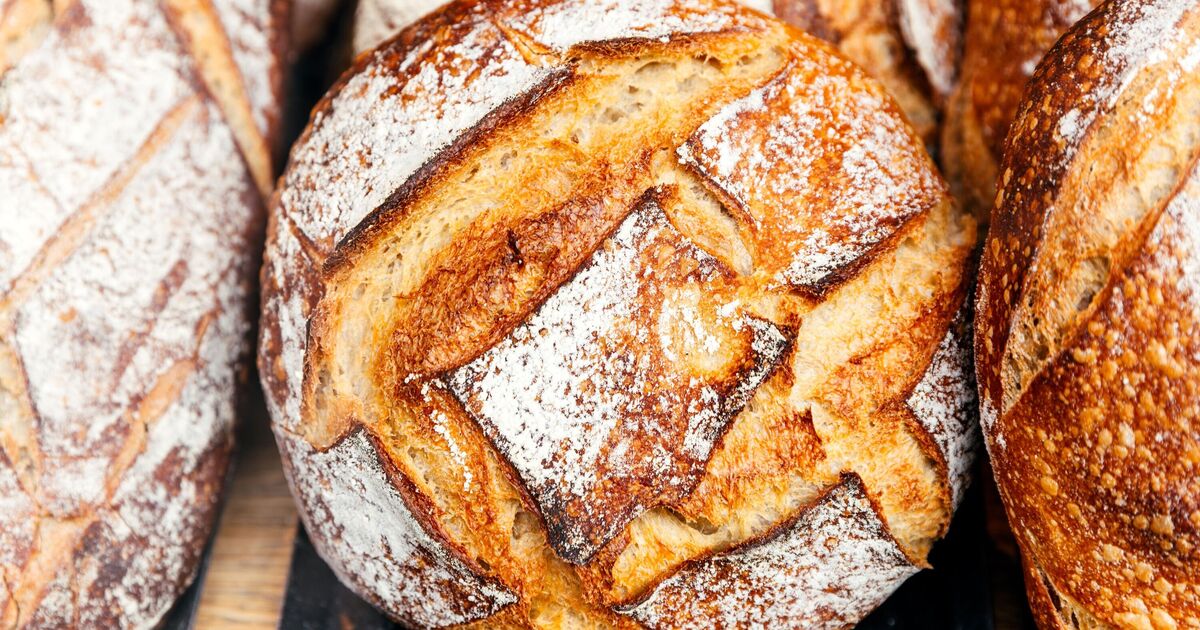
How to make sourdough bread starter (Image: Getty)
Nothing quite compares to the aroma of a freshly baked loaf of bread, especially when it’s sourdough. This bread is renowned for its unique, tangy taste that comes from a special fermentation process involving a naturally fermented starter teeming with yeast and bacteria – a component not found in your average supermarket loaf.
Home bakers can easily whip up this starter, according to Elaine Boddy. The sourdough maestro, esteemed baker, and cookbook writer shared her insights with Express.co.uk: “When it comes to making sourdough, it all begins with your starter. Starters can seem like mythical beings when they’re much simpler to work with than we’ve been previously led to believe.”
Read more: Stop buying salad dressing when quick 3-ingredient recipe tastes creamier
Read more: Black coffee tastes ‘smoother’ when pinch of kitchen staple is added

An expert has shared their go-to sourdough recipe (Image: Zenovia Dumitrescu / 500px via Getty Images)
The creation of a sourdough starter involves just flour and water left to ferment, reports the Express.
Elaine explained: “Once made, it lives in the fridge until you want to make dough at which point you feed it with flour and water to generate more and give you the amount you need to make your recipe.”
In her guide to perfect sourdough, she advises letting the starter grow post-feeding for three consecutive days, aiming to bake bread around day seven.
To kickstart your own sourdough journey, the recipe is straightforward: combine 50ml of water with 50g of strong white bread flour. Elaine endorses Matthews Cotswold Flour, specifically Churchill’s white flour, but notes that strong wholemeal or wholewheat flour, or any ancient grains flour, will do the trick in equal measure.
How to make sourdough starter
Equipment
- Lidded glass bowl, like the Weck 744 580ml tulip jar, without the seal
- 50g strong white bread flour (plus extra for feeding)
- 50ml tap water
- Stainless steel spoon and fork
Day one
Start by mixing water and flour in a bowl, ensuring you stir thoroughly, scrape down the sides, and incorporate everything using a stainless steel spoon or fork. The mixture should be quite thick at this stage; then loosely cover it to allow gases to escape and leave it on your kitchen counter overnight.
Day two
On the second day, add 30g of flour and 30ml of water to your mix. Make sure to scrape down the sides of the bowl, blend it all together, then cover it loosely and let it sit on the counter.

When you’re not using your starter, store it in the fridge, it will go to sleep until you want to use it (Image: Getty)
Day three
Introduce another 30ml of water and 30g of flour into the mix, stirring well and scraping down the sides to ensure everything is combined. Cover the bowl loosely once more and leave it out on the counter overnight.
Day four
Elaine points out that although the starter might appear bubbly now, it’s not yet ready for use. She recommends discarding half of the mixture to maintain a “lean” starter.
After discarding, add 30g of flour and 30ml of water, scrape the sides, stir the mixture, and leave it covered loosely again.
Day five
Continue with the same feeding routine: 30g of each component, stir, scrape, and cover.

A sourdough starter is the ‘yeast’ in our dough and is made by fermenting flour and water (Image: Getty)
Day six
Again, discard half of the mixture before repeating the feeding process.
Day seven
Carry on with the same feeding steps, adding 30g of each ingredient, stirring, scraping, and covering. Elaine suggests that if your starter doubles in size by the next day, it indicates that it’s ready to be used.
Elaine advises to aim for a “thick and glutinous” texture in your sourdough starter. She explains that once it’s been fed and is bubbly, you should see bubbles throughout the mixture.
“If you are not sure, keep doing the same discarding and feeding schedule for up to 14 days, by which time it should be ready to use” she added.
Our community members are treated to special offers, promotions, and adverts from us and our partners. You can check out at any time. Read our Privacy Policy
For those cultivating their own sourdough starter, Elaine highlights an important tip: “a really key thing to keep in mind is that the fridge is your friend”.
She recommends storing your starter in the refrigerator when it’s not in use, where it will effectively “go to sleep” until you’re ready to bake with it again.
This advice also applies during warmer periods when your starter may become overly active; chilling it can help moderate its growth rate.
Even if you’re planning a holiday, Elaine reassures that your starter can be left in the fridge undisturbed. It will remain dormant until you return.
To finish the bread, Elaine’s full sourdough recipe calls for:
Ingredients
- 50g starter (or less)
- 500g strong white bread flour, preferably Matthews Cotswold Flour, Churchill’s white flour
- 350g water
- 1tsp salt

